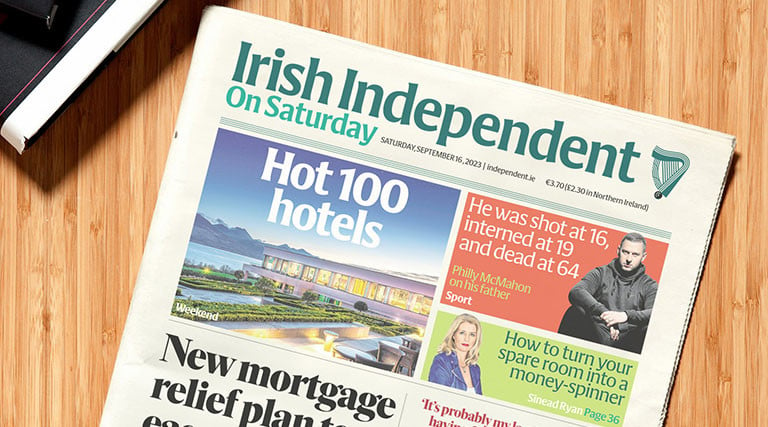
Signature journalism: focusing on quality and courage
Text: Marcella Breedeveld | Editor NRC
Images: Geert Van de Velde
Some terms are used so often in a short space of time that they seem to become worn out before they’ve become reality. AI is one of those terms. Thousands of articles have been published about it in the past year, in all shades, from extreme optimism to doom and gloom. There’s always one common denominator, though: the effects of AI may be incalculable, but they will be unprecedented. And where some see hope for breakthroughs in, say, the treatment of dementia or cancer, others see whole industries disappearing. Can AI take over the research work of lawyers? Make consultants’ advisory reports obsolete? What about the work of journalists?
The discussion about AI is raging within Mediahuis too. As with the widespread introduction of the internet and the advent of smartphones before it, the application of AI will dramatically change the playing field for journalism. Journalists will gain a whole new toolbox of resources, but there will also be new providers in the market and different behaviour among news consumers. Perhaps everyone will soon have their own AI assistant that offers them news, entertainment and practical information at any time. Or maybe a plethora of AI-manipulated images and texts is heading our way, further increasing distrust of the media.
Shaping the future
How do the Mediahuis newsrooms see things? In the summer of 2023, a working group of editors and two innovation specialists spent four days in Amsterdam discussing the future of journalism, as part of Mediahuis’ strategic planning towards 2030. Six months later, two of the participants look back on that meeting and discuss how they are shaping the future in practice. Pascal Weiss is editor-in-chief of the Belgian title Het Nieuwsblad, and Amien Idries is deputy editor of the German Aachener Zeitung. Their tone is upbeat and positive – though both acknowledge that it’s incredibly hard for journalism, including their own titles, to stay relevant enough that people are willing to pay for it.
Last summer in the working group, which I took part in myself, there was a lot of talk about signature journalism: journalism that is recognisably and substantively distinct from the stream of reports that news consumers can get everywhere. How do you put that into practice in your own newsroom?
Pascal: “At Het Nieuwsblad, we’ve already started to focus much more on stories that make a difference and lead to conversion, convincing readers to subscribe because they want more of those stories. In previous years, we’ve been a little too focused on reach, on attracting visitors to the site by publishing a lot. Of course, we want to maintain a wide reach, that also suits our title. But we want to do that with fewer pieces, of better quality.”
Does that lead to discussions in the Nieuwsblad newsroom?
Pascal: “The journalists are happy with this path. For the publisher, it’s more complicated, because they’re also looking at ad revenue. But to attract and retain subscribers, we have to choose what we want to do and make sure we’re the best on the topics that matter to us, such as sports and domestic coverage. That’s what I believe in.”
How is the conversation about signature journalism going at Aachener Zeitung?
Amien: “For me, signature journalism means independent journalism that is fearless. That can speak for people in society who don’t have a voice. Let me give an example that I’m very proud of. Our newspaper has written a lot about sexual abuse in the church in our region. We faced a lot of opposition and legal problems in the process. And yet we eventually published the names of several sex offenders. I don’t think we would have done that in the past. A regional title is part of society where such topics were taboo. But times change and, following the pressure of our coverage, the church itself published the names of 53 perpetrators.”
Is signature journalism always serious journalism?
Amien: “For me, journalism is about finding things out, investigating, telling readers what’s happening around them, in terms of politics and governance. This could be at any level, from municipal to national. We’ve always done that and should continue. But where we need to reinvent ourselves is telling our readers about many more topics: food, wine, shops. The lighter stuff, so to speak. Our journalists know everything that goes on in the region, around every corner. But we weren’t writing about it.”
AI is journalistic gold
During the working group’s brainstorming sessions in the summer of 2023, AI went straight to the top of the agenda. A few months earlier, at an extended session on the future of journalism, the topic had already been discussed as an interesting subject but not an urgent one. But with the global introduction in late 2022 of the user-friendly language bot ChatGPT, it became apparent how easy it was to use AI to answer questions and write letters, articles and even entire theses.

The working group on the future of journalism talked a lot about AI, including as a way of taking over some of journalists’ work. How does that perspective relate to the desire for higher quality and more distinctive journalism?
Pascal: “We want our journalists to be real experts, to be seen as an authority by readers. If AI can help with rapid news on the news desk, we can free up budget for more in-depth journalism. Readers should be able to trust us. They want to pay for that. That will only become more important in the coming years.”
Amien: “Artificial intelligence can really improve journalism. Imagine all the things you could do if you could search and analyse every report at the municipal level, for example. We have journalistic gold on our hands.”
Aren’t publishers looking forward to the chance to downsize newsrooms?
Amien: “We should always think about how to use our limited resources. What we do, and what we don’t. This also applies, for example, to choosing which social platforms we have a presence on. I see that newsrooms also do a lot of donkey work: if that can be taken over by AI, our journalists can focus on stories that make a difference.”

Euractiv covers European decision-making
Text: René Moerland | Publisher Euractiv
Image: Andreas Terlaak
Euractiv is the medium of choice for exposing the dynamics of European decision-making, fuelled by its newsrooms in Brussels, Berlin and Paris and by a network of Euractiv correspondents and partners in almost all European member states.
In November, our tech editors in Brussels reported that France, Germany and Italy had put new demands on the table in the run-up to the deal, which threatened to torpedo the law. Major companies in these countries feared that the system of making rules stricter when risks are higher would come at the expense of their competitiveness and economic interests. The scoop led to public debate in Brussels and member states: how should necessary safeguards relate to space for economic and technological clout? The system essentially remained intact in the December compromise.
Holding power to account is a traditional role for the media that does not come naturally at the European level. National media often have excellent correspondents in Brussels, but it can be difficult for them to follow every step of European decision-making in detail. And naturally, they concentrate mainly on their national audience.
Euractiv specialises in European politics as a whole. Its websites and newsletters offer rapid insight and overview of what is going on between European capitals and in Brussels policy areas, from energy and climate to geopolitics, defence, agriculture and healthcare – and technology, of course. Unlike its rival Politico, the focus is on looking ahead to policy: what to expect tomorrow in Europe?
Mediahuis has owned Euractiv since May 2023. It is the first pan-European title within the group, with no print heritage. Euractiv publishes in 12 languages, including English, French and German.
More than other Mediahuis titles, Euractiv targets the market of professional users, who need fast and detailed news in their field. Euractiv subscribers have AI tools that make them the first to be informed about relevant documents, profiles of decision-makers and social media patterns on European decision-making. In Brussels, our meetings about politics and policy are heavily attended.
The acquisition by Mediahuis in May made room for initiatives to start developing Euractiv’s potential as a European medium. Having been one of the few digital media to build a sustainable existence in the first years after its creation in 1999, we were keen to join Mediahuis with its experience in developing subscriptions to quality journalism.
Since the end of 2023 there has been a new French-Belgian-Dutch management team in place, with managing director Claire Boussagol, former CEO of Politico Europe, Mediahuis’ specialist in digital subscription transformation, Emmanuel Naert, and me as publisher of Euractiv. The working language at Euractiv is usually English, but with staff from 20 countries, you can also practise your Croatian, Polish and Italian. And sometimes, very briefly, a little Flemish and Dutch.
Free digital editions of De Limburger for 3,000 pupils
Participating in society and opening up opportunities for a brighter future. Can reading the newspaper every day contribute to that? Three thousand schoolchildren aged nine to 12 and their families in Heerlen-Noord in the Dutch province of Limburg will be able to access De Limburger online for free for the next four years. The newspaper is also becoming part of lessons in almost 120 classes.
Heerlen-Noord is one of 20 areas in the Netherlands financially supported by the national government to reduce social inequality. The residents of this area, made up of 14 neighbourhoods, have poorer life chances than people living elsewhere in the country, due to a literacy and information gap.
People who have access to reliable information are better able to participate in society. That’s the reasoning behind the Krant van de Buurvrouw initiative. De Limburger journalist Monique Parren is the coordinator. She lives in Heerlen-Noord, worked for the newspaper there for years and knows the area like the back of her hand. “The aim of this project is to bring journalism back to working-class neighbourhoods,” she says. “To reconnect with people who have lost faith in the media. We are initially targeting schoolchildren – to make their world bigger and give them role models – and then we hope to reach their parents too.”
De Limburger also intends to establish a local office in the neighbourhood. “As a newspaper, we see it as our social duty to help bridge the gap between people who have sufficient access to reliable information and those who don’t,” says editor-in-chief Bjorn Oostra. “When young people read about the place where they live, inside and outside school, it can improve their chances in life and strengthen our communities and democracy.”
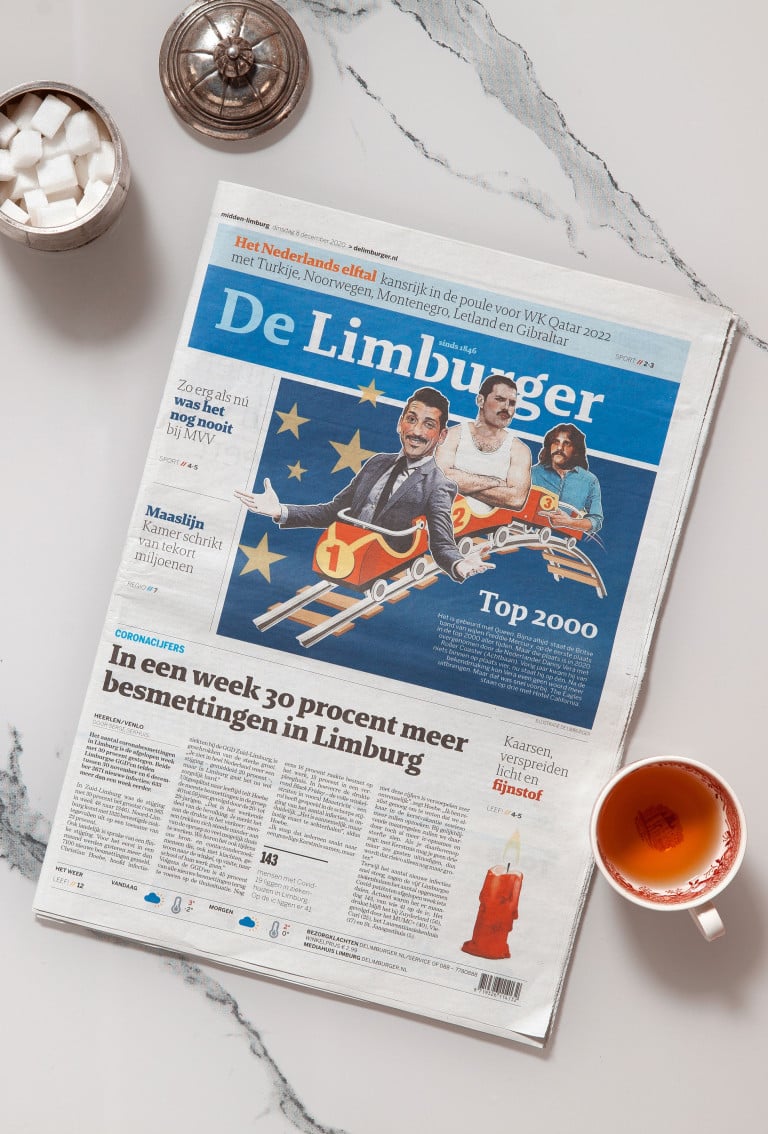
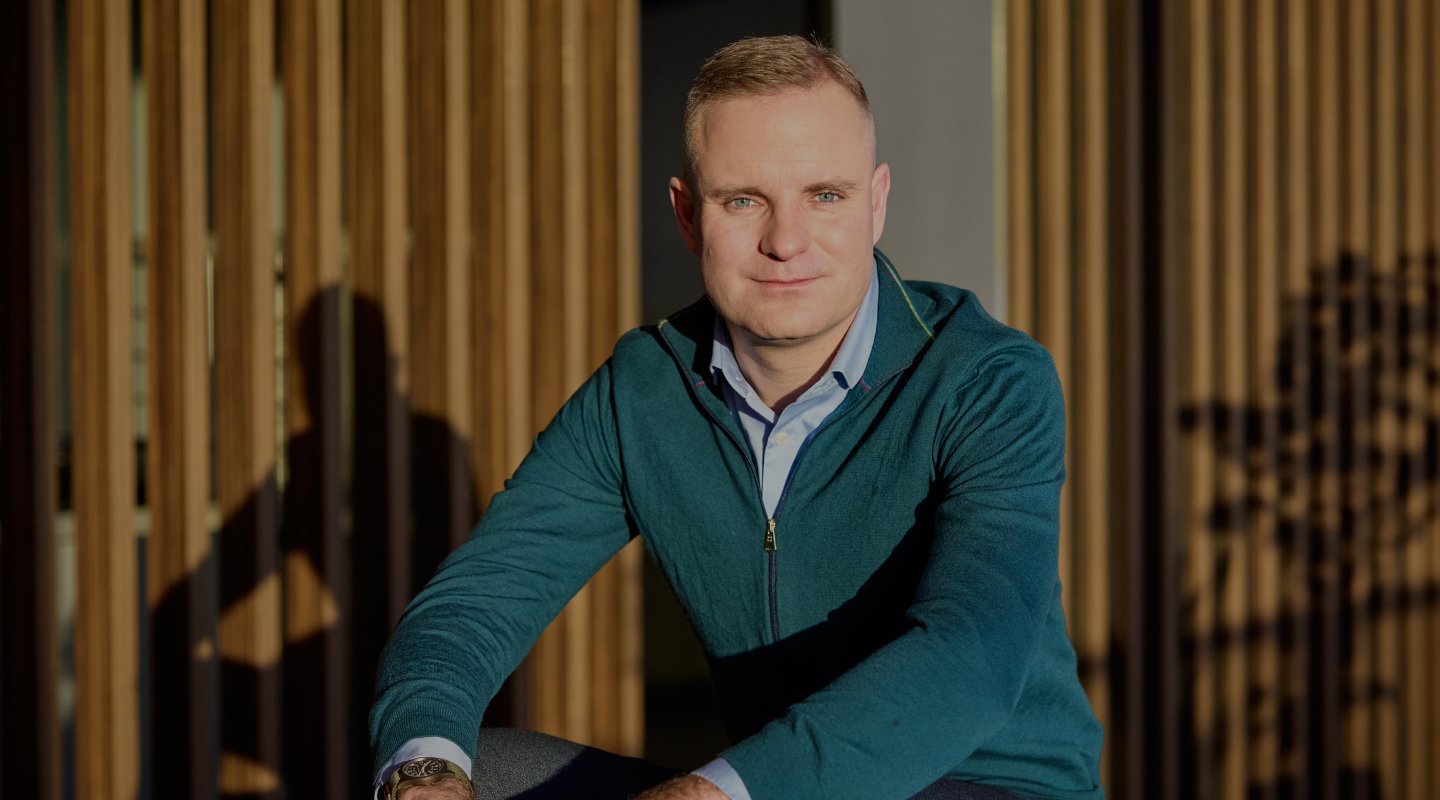
The Trust Project:
breaking down the wall between the newsroom and the outside world
Text: Hanne De Belie | Journalist Het Belang van Limburg
Image: Sander Stoepker
“You see in so many reports that trust in the media has really fallen in recent years. We have to work on that.” With this in mind, NRC signed up to The Trust Project, an international initiative involving news organisations everywhere, from the US to Hong Kong. “There are several ways to measure trust,” says deputy editor Melle Garschagen.
“There are often rankings, based on surveys. That’s great if you get a high score, but it’s not much use to you. The Trust Project is an initiative of a university in California, set up by journalist Sally Lerhman. It intrigued me because it’s practical, with directions, guidelines and rules. It’s quite compelling, and challenges a newsroom to improve.”
The Trust Project uses eight indicators, including making your organisation’s operations public.
Melle: “Those indicators aim to make it clear who you are, what you do, and how you operate. Transparency should help subscribers and non-subscribers trust you more, because they understand you better. It forces you to properly explain who your journalists are, what social attitudes drive your journalism, where your funding comes from. We can be quick to gloss over that because our primary aim is to tell good stories. We are less good at showing behind the scenes.”
What does The Trust Project’s procedure entail?
Melle: “We had to fill in a long questionnaire about the newsroom and the publisher. Based on that, you become a sort of candidate member: it’s a bit like accession to the EU. Once you’re a candidate member, you have to implement The Trust Project’s requirements. I won’t beat around the bush: it’s not easy. It’s hard work and takes a lot of time. It was pretty challenging.”
How does NRC approach this in practice?
Melle: “It’s a series of small, very tangible, journalistic-oriented interventions. We can see clearly: we used to do it this way, and we should do it that way. The world around us tolerates mistakes; they only get angry when we don’t honestly acknowledge those mistakes. We traditionally correct mistakes in paper on the opinion page. Online, we put a note below the article. The Trust Project said: ‘Fine, but where can we see a list of your corrections online?’ We didn’t have one. So we’re developing an overview page for corrections. It will have a more prominent place online.”
If you meet all the requirements, will NRC get a Trust Mark?
Melle: “That’s right. Then you can put the logo on your website, saying that NRC is part of The Trust Project. I think the difficult thing is that NRC has traditionally been committed to quality journalism and being transparent. I don’t want to give people the impression that The Trust Project is telling us to do it. We’re participating because we think it’s important, not the other way round.”
Why is trust becoming increasingly important?
Melle: “Automatic acceptance of authority from government agencies and professional media has been under pressure since Covid. On the other hand, there’s the digitisation of journalism. When the newspaper was still a huge thing on paper, you read it all at home. With digital journalism, you surf, you come across something and you read it. Particularly if you’re reading on mobile, you don’t get much context. The Trust Project makes you think not only about the content of an article, but also how to interpret it and place it in the wider perspective of all the information you can access today.”
Then we come to fake news…
Melle: “It’s a strong signal when trusted media organisations, from national to regional titles, come together and say: ‘You can trust our journalism. We stand together against what is fake and produced super quickly and super cheaply. Journalism costs money, and you have to pay for it."
Does more trust lead to more subscribers?
Melle: “In the end, I think it does. But you shouldn’t join The Trust Project because you think it will get you more subscribers or clicks in the short term. It’s less opportunistic than that. I do think news organisations that work on transparency, quality and a kind of vulnerability will outperform the rest in the long run. We had a group discussion with editors about The Trust Project. Someone described it as a way to break down the wall between the newsroom and the outside world. That’s a good summary. News organisations that do that are more future-proof than news organisations that become an opaque process themselves in the age of AI, algorithms and lots of opaque processes.”
Is the intention that other Mediahuis titles will follow suit?
Melle: “The editorial teams of all the Mediahuis news brands are looking at how to maintain and strengthen reader trust. We have established The Trust Hub within the group. All editors-in-chief are involved in the initiative and are looking at how they can join forces on the issue of trust. The Trust Project can help with this and provides preliminary tools to get started. You can’t enforce the project at group level, but each title can take from it what suits it best.”C.Tru
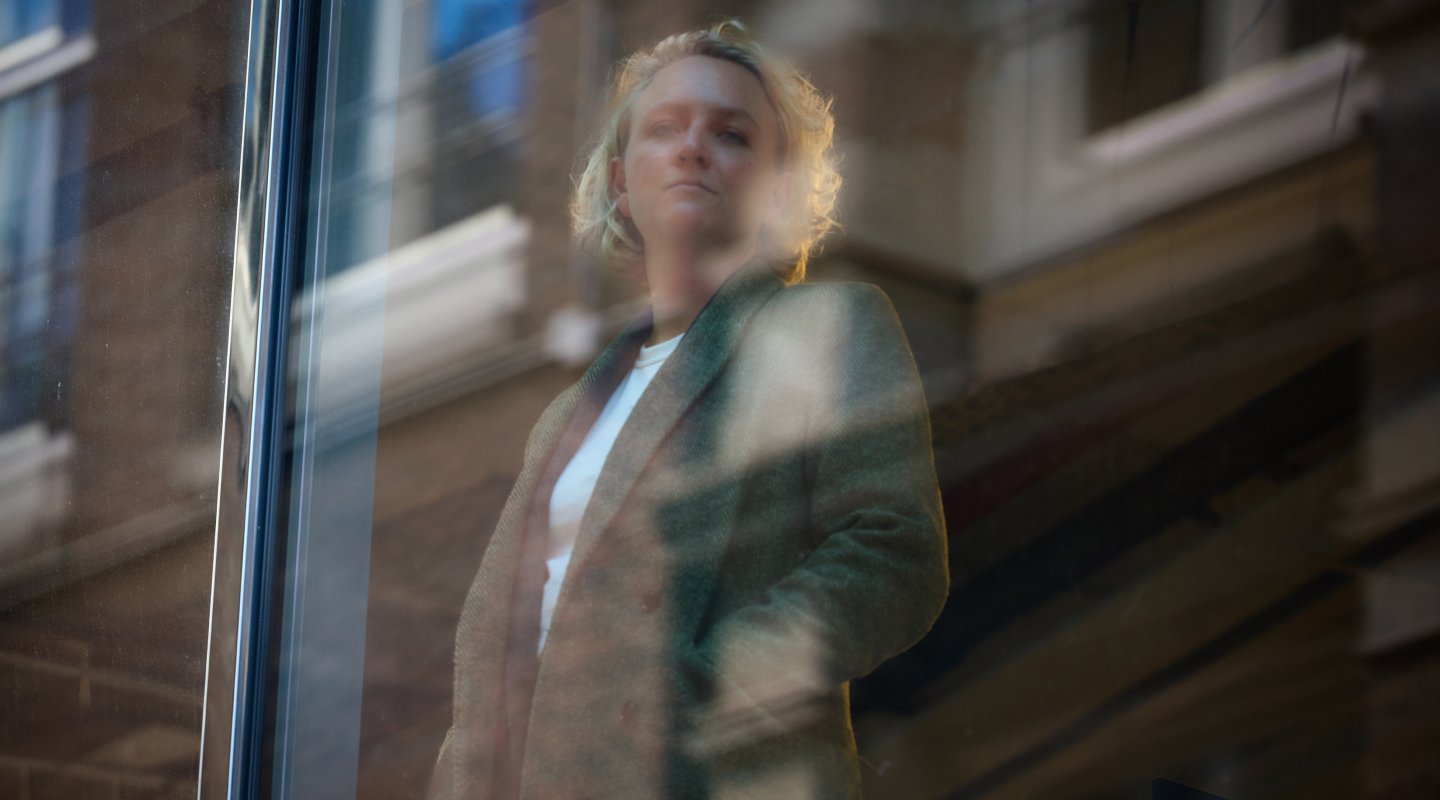
C.Tru seeks entry-level news offer for Gen Z
Text: Sophie van Oostvoorn | Editorial lead, C.Tru
Images: Sander Stoepker
My journalism career has been dominated by the relationship between journalism and audience for about six years. First on NRC’s readers’ desk and then as author of my own newsletter, De Nieuwe Lezer. Now, I’m focusing on the young audience: Gen Z, or social natives as we call our target audience at C.Tru. Alongside Christopher Kenis, I’ll be exploring how to reach and engage young people with quality journalism, and how we can create a sustainable revenue model to go with it.
The news habits and information consumption of social natives is very different from that of previous generations. They’ve grown up with an internet dominated by social networks and have known nothing other than information presented to them that was selected by an algorithm. Expecting Gen Z’s news consumption to change because they’re getting older is much like expecting millennials to get a landline because they’re getting older. That’s how Rasmus Kleis Nielsen, director of the Reuters Institute for the Study of Journalism, put it in the introduction to the annual Digital News Report 2023.
I am a millennial (without a landline) and I did grow up with a newspaper on the kitchen table. I remember what it sounded like when you connected to the internet via the phone line. So, how do I go about figuring out how social natives like their journalism? Well, I start with them.
News avoidance
Young people’s attitudes towards news are different from those of older groups. Their attitude towards reliability is at odds with how older generations view it: it’s not a feature of a news brand, but the result of their own research. In addition, when determining whether something is “news” or not, relevance to their own experience is much more important than it is for older people. Daily news consumption and news interest is lower than in older age groups and news avoidance is highest. They are, the latest media monitor report showed, increasingly disconnected from established titles.
That’s not surprising in itself, given that those titles are targeting older readers. The journalism they produce suits the way older groups consume news, not young people. Although young people’s information needs will change over time, there’s no reason to believe that their preferences for platforms will change and they will suddenly start picking up a newspaper.
Design thinking approach
Gen Z consumes less news through traditional sources, but there is plenty of opportunity to reach them, especially through their phones, where they spend hours every day. So, where is the missing piece of the puzzle? We think part of the solution lies in making connections through journalism. There is a lot of quality journalism in the Netherlands, but the way it’s presented apparently doesn’t fit the way that young people want to consume it. News is personal, but it’s often transmitted in a very impersonal way.
We want to find an entry-level format that suits the needs of this group of young people. It goes without saying that what we will create is aimed at the smartphone: formats suitable for the device and therefore also suitable for promotion and distribution on social platforms and chat apps. This is how we respond to the needs of our users and the places they spend time, such as Instagram and TikTok, as well as chat apps, to connect our potential audience with independent journalism through direct information exchange. To deepen those connections, we give our users space to figure things out for themselves and engage in conversation about the news.
As stated, a platform is the obvious choice, but we want to carry out some experiments to figure out what that platform should look like. We’ve chosen the design thinking method to arrive at a solution to our problem. This year, while testing and talking with our target audience, we want to start shaping our journalism strategy, looking for a revenue model that supports independent journalism and fits young people’s preferences. After all, who knows what developments will come next year that will influence the information ecosystem.

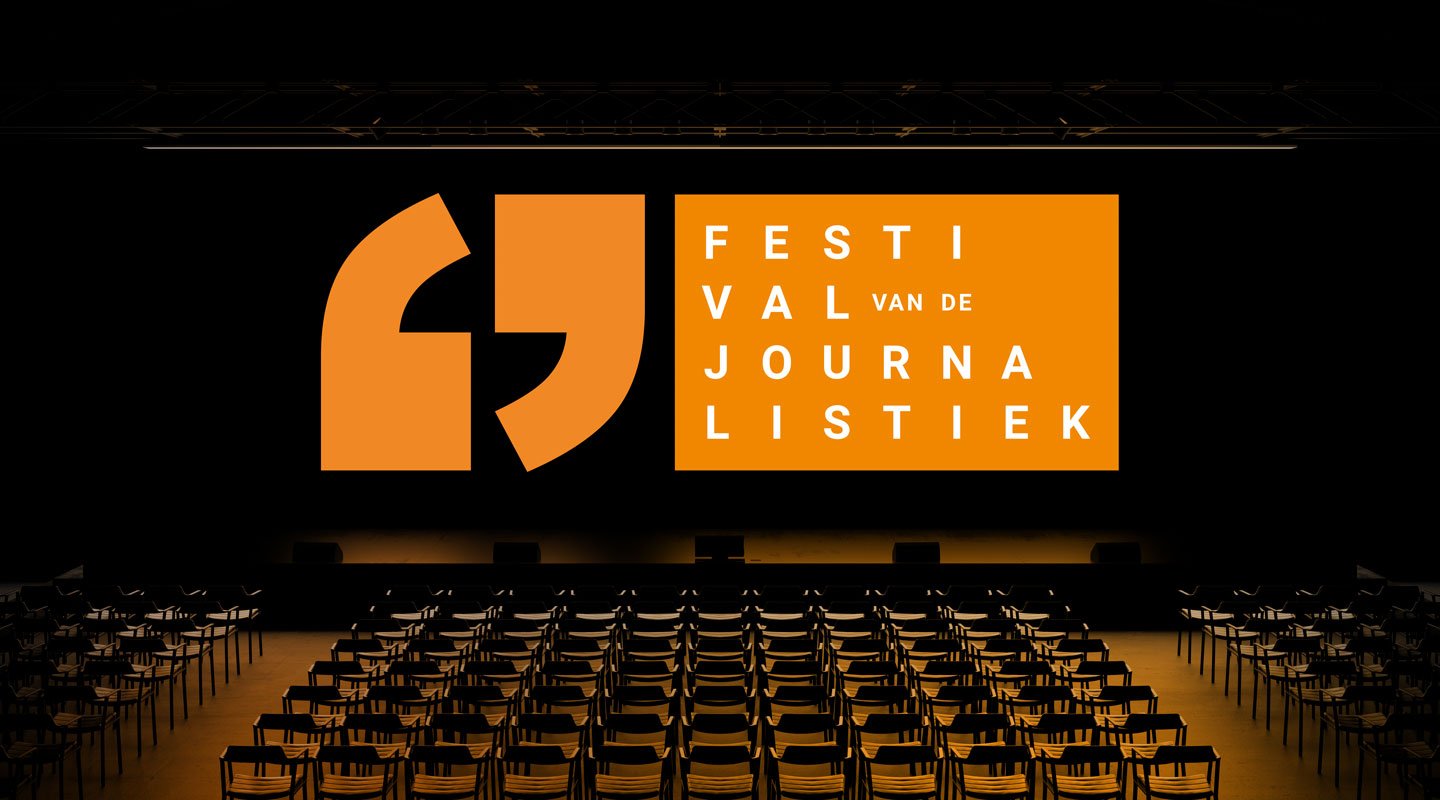
Mediahuis Festival of Journalism
Text: Marcella Breedeveld | Editor NRC and initiator of Mediahuis Festival of Journalism
Images: Olivier Middendorp
AI was a hot topic at the Mediahuis Festival of Journalism, which took place on 16 May at Utrecht’s TivoliVredenburg music complex for some 240 journalists. The event included a panel discussion on AI and the future of journalism and workshops on image manipulation and geolocation, which allows journalists to determine where and when an event took place.
The Mediahuis Festival of Journalism is the ideal opportunity for journalists, data experts, graphic designers and picture editors to learn with and from each other. With 48 sessions, there was lots of choice, ranging from research techniques, narrative writing and journalism on TikTok to the power of newsletters, the pitfalls of statistics, writing for a podcast and presenting on camera. Sessions also looked at learning to deal with criticism from colleagues and attacks on social media. In between, there was plenty of opportunity to talk, exchange ideas and make plans together.

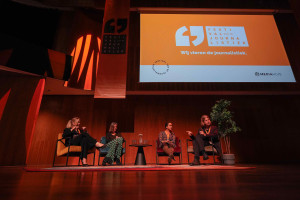
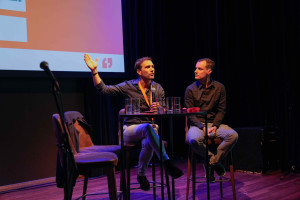
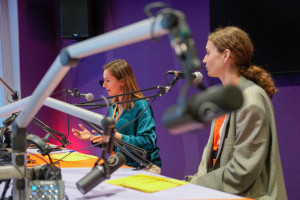
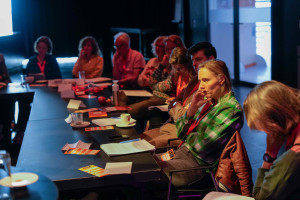
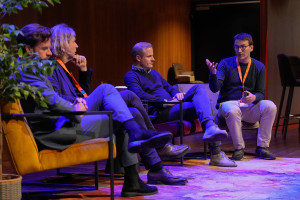

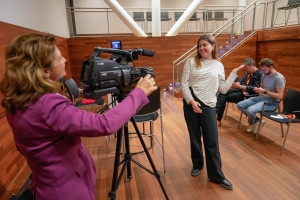
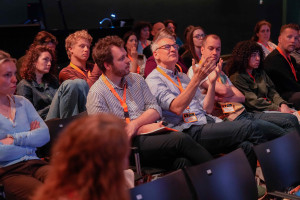
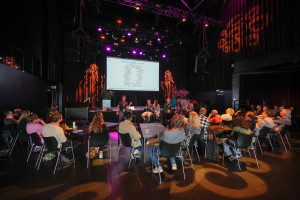
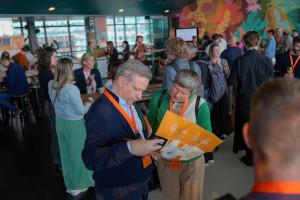
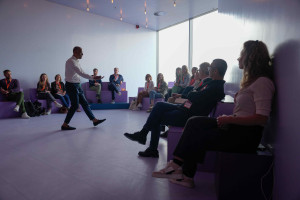
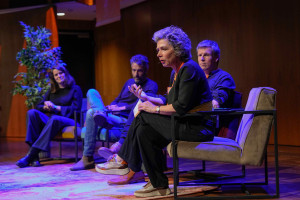
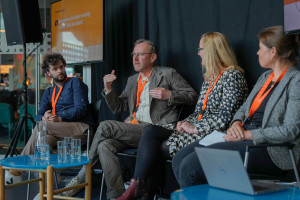


Simone Thelen , Aachener Zeitung
“On the return trip we discussed: what could a news podcast for the Aachener Zeitung look like? Should we let AI write our teasers or even entire texts? Should we expand our audience with TikTok content? We've brought a lot of information, inspiration and new ideas home with us.”
Genaud Molin, De Limburger
“It was great to exchange knowledge with colleagues from within our group."
Ralph Hewitt , Belfast Telegraph
“The opportunity to discuss digital strategies with Mediahuis colleagues from all over Europe meant we could share some good ideas.”
Mélodie Mouzon, Virgule
“I got a lot of good tips from the day, specially about internet security, best practices in using Al, and how we can improve the digital experience of our readers.”
Rosalie Mulder, Friesch Dagblad
“I enjoyed meeting people from other titles and found it interesting to hear their opinions and ideas. The Festival of Journalism offered a varied programme with inspiring sessions."
Sinead Kissane, Sunday Independent
“The AI panel was really informative and helped me understand the issues around this topic. Actually, everyone in Mediahuis Ireland should get up-to-date on this, whether or not they have an editorial function.”
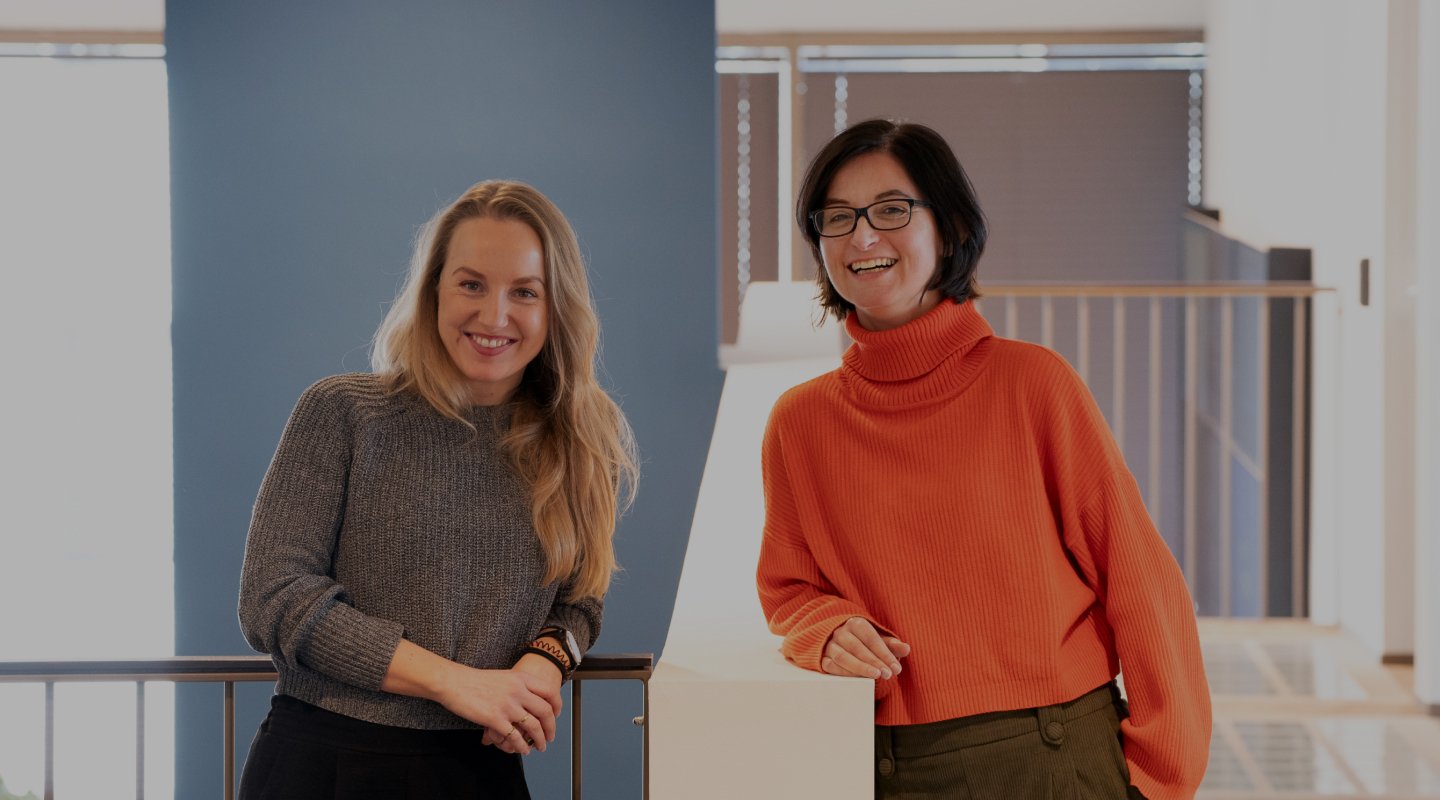
Transparent and ethical use of AI
Text: Ruud Maas | News director De Limburger
Images: Rob Oostwegel
Thanks to artificial intelligence, I gained an hour or two working on this interview. Normally, I would have retreated to a quiet room and meticulously typed out the conversation with Sarah and Mariëlle that I recorded with my iPhone. The advantage: I would hear every sentence again, and in my head a thread for the story would emerge. The disadvantage: typing out one hour and 13 minutes of talking would take me over two hours.
Instead, I uploaded the audio file to GoodTape.io and, thanks to a paid subscription, I had the entire transcript on my screen about five minutes later. The result is good enough and offers a decent basis to start writing. Although the service gets a bit stuck with names. For instance, when Mariëlle talks about the first time she heard of ChatGPT, the software turns it into Chit Chibati, and the names of colleagues are garbled.
“We’re developing our own transcription tool at Mediahuis, and maybe we can use the lessons we learn from it in other projects. That’s not to say we’ll develop just about anything related to AI; we have to see the added value of it,” Sarah says. She started as Business Partner AI in December 2023, after several years as Consumer Data & Insights Manager and Digital Manager. “My role was created to accelerate the adaptation of AI within Mediahuis. We’ve made great strides in recent years and some colleagues were already ahead of the game locally, but we’re now trying to streamline everything. Otherwise, there’s a risk that we’re trying to reinvent the wheel in five different places at once. It’s also important to be mindful of the different views on AI.
A number of people are very enthusiastic, but you also have those who want to be guided or have critical questions about the potential risks. There are so many opportunities and so many questions and it’s important to clearly explain why we are not, or at least not yet, doing certain things.”
Boring jobs and routine tasks
Mariëlle leads a working group at De Telegraaf that’s mapping the possibilities of AI and trying to ensure that every department embraces it. “We started talking to fans of the idea and took stock of what they wanted. Often we heard the same thing: I want AI to take over the boring jobs from me. It’s often these tasks that you find draining and that don’t make you happy. I recognise that. Say you need to write a 500-word article, but you get stuck at 478 words or 521. AI can get it to exactly the right length, based on your piece, and you can judge for yourself whether the result is any good. The same goes for a transcription tool. Not only does it save you lots of time, it can also solve practical problems. Recently, a colleague had a broken arm, meaning she couldn’t type. Instead, she dictated her story and it was transcribed by AI. That’s a real win.”
Mariëlle herself discovered the power of AI through a chatbot. “As soon as I find something new, I dive right in and start sharing it with friends and colleagues. I remember when my friend sent me a clip of Alexander Klöpping demonstrating ChatGPT on TV. We started playing with it right away and I thought: this is amazing!”
Sarah recognises that: “I’ve been exploring AI for years. It can do things that seemed impossible because it exceeds the limit of what humans can handle. People have so much to do that they would like to have routine things simplified, freeing up more time.”
What’s more, Sarah is convinced that AI really adds something to the journalistic process. “We’re in the process of getting AI to correspond with our news archives. The idea is that as a journalist you will soon be able to interact with it, so to speak, asking the archive a question and getting an answer in a summary that contains references so you know which articles the information comes from. It’s a track sponsored by Google, but we are the ones who decide what we do. I think it’s important for Mediahuis to better understand the technology behind these tools. You don’t want to miss the boat and we don’t have the luxury of saying: we’re not doing anything with AI. We just have to do it in the most sensible way.”
“That means listening carefully to your journalistic compass,” Mariëlle adds. “Just as you handle sensitive information carefully as a journalist, you also have to think about what you do and don’t want to hand over to AI and what the risks are. We have to keep each other on our toes.”
Human in the Loop
“That’s exactly why Mediahuis, with the help of all the editors and the Data & Product team, developed an AI framework,” Sarah explains. “It’s to ensure that we use artificial intelligence in a way that is ethical, transparent and in line with our values. This framework, among other things, says that AI can be used to automate time-consuming tasks so that journalists can focus more on the content. But we should always disclose if AI has been used in a piece of journalism, there has to be a human involved in the process, and the public are encouraged to give feedback on AI applications. The framework at Mediahuis is a good guideline for what we do, what we want to do and what we definitely don’t do in terms of AI. I still think the most important point is that before something is published, it has been looked at by a pair of eyes. A mistake is easily made, AI can get things badly wrong. And we are responsible for such a mistake. On the other hand, I continue to think we shouldn’t be too scared of artificial intelligence. I don’t believe in AI as some evil entity.”
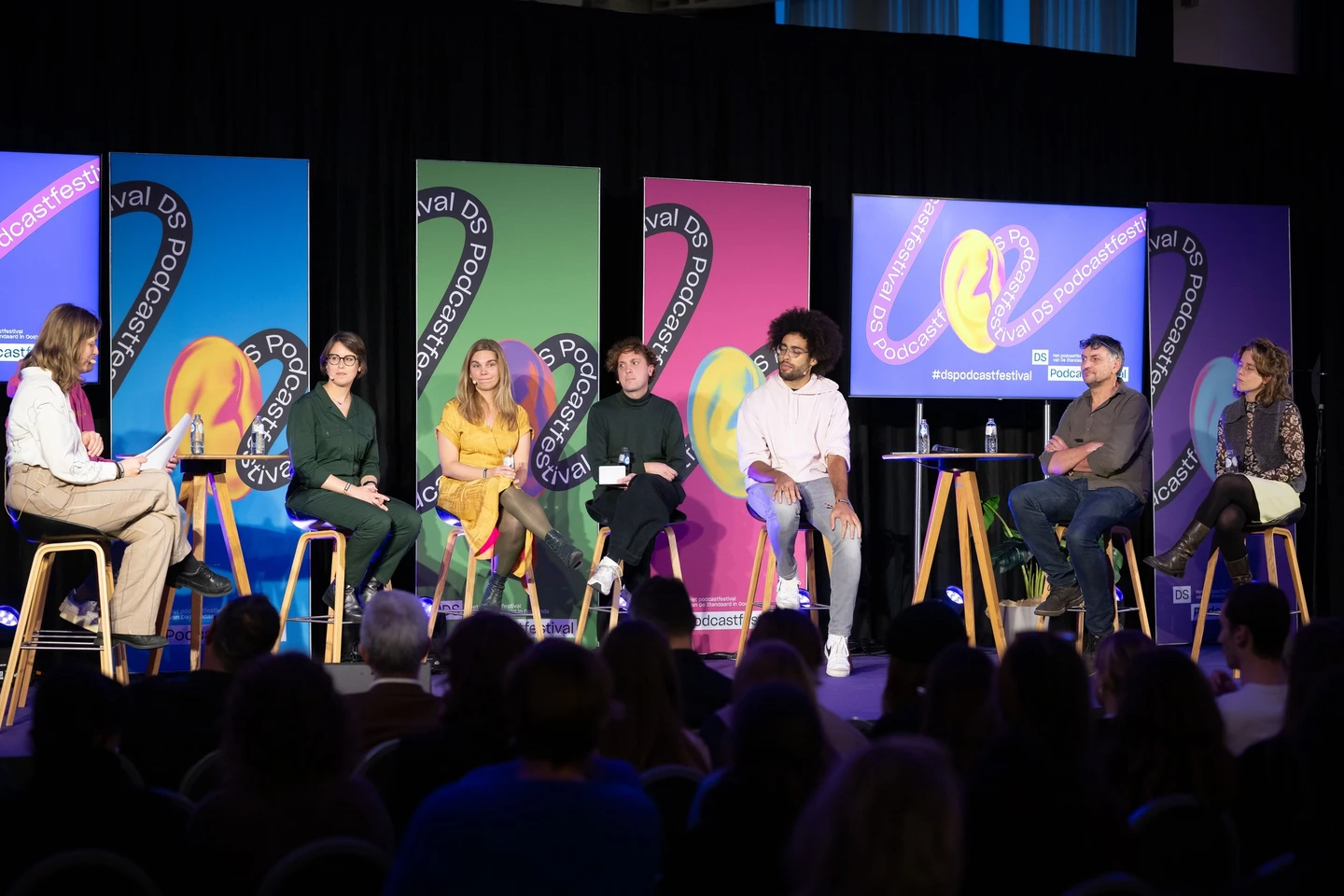
DS Podcastfestival
Image: Nick Decombel
There were, of course, journalism podcasts like DS Vandaag and Radar present, but the programme was also broadened out to include true crime, sport and fiction.
Besides live recordings and listening sessions, there was room for debates and panel discussions. These included the use of music in podcasts, the evolution of the still young Flemish podcast industry and the rise of AI.
Successful podcast creators illustrated how to tell a personal story, while Karel Verhoeven, editor-in-chief of De Standaard, spoke to a number of war correspondents to discuss how they shape their reporting in audio.
Just like in the first edition of the festival, there was also the presentation of the Oorkondes, the Flemish podcast awards. There was particular interest to see who would receive the Career Award. That honour this year went to AudioCollective SCHIK, which has delivered strong podcasts such as Bob, El tarangu and Geen kleine man in recent years. This edition of the festival also saw the world premiere of their long-awaited new series, De erfenis.

In 2023, the Indo Daily found its voice
Text: Kevin Doyle | Group Head of News, Mediahuis Ireland / Executive Editor, Irish Independent | Presenter, The Indo Daily
Images: Steve Humphreys
Inevitably, the industry would also judge our offering. Awards followed. The Indo Daily won Daily Podcast of the Year in Ireland and Best Podcast at WAN-IFRA’s European Digital Media Awards. There were other wins at The New York Radio Festival, the European Newspaper Awards and the Smurfit Business Journalism Awards.
The podcast is a relatively new product – but it is very much built on the same principles that have always applied to our journalism. For decades, the Irish Independent has been Ireland’s best-selling daily newspaper. Generations of families have viewed us as a trusted source of news, information and entertainment.
But with the media landscape changing at an often unpredictable pace, we saw a greater need to be where the audience is. They’re no longer necessarily “readers”. And many younger people don’t feel a connection to “traditional media”. We need to trade on a future promise rather than a legacy.
High expectations
In 2022, the Irish Independent prioritised building an audio brand that could turn existing readers into listeners and reach a new audience who are unlikely to ever buy a newspaper. While this was not a novel idea, our aim was to bring a news offering that Ireland did not have – and to do it within existing resources.
Around 40% of Irish adults describe themselves as regular podcast listeners, well above the EU average of 32%. The plan was to invest time and people in producing something that could become part of people’s day in the same way that the newspaper once was. The questions most regularly asked in our news conferences are: “But what does it mean? And how does it impact on our lives?” The podcast needed to focus on those questions, to be thought-provoking and challenging, entertaining and inspiring. And, when appropriate, bring a smile to Ireland’s face or a tear to her eye.
Building an Audio Team was an entirely new venture for the Irish Independent. The bar was set high: we hired Mary Carroll as Head of Audio. She had been chief producer on a popular and high-profile radio programme, The Last Word, on Today FM, so this was a statement of intent to the industry. A small team of researchers were also brought on board.
Audio wasn’t a totally new concept for Mediahuis Ireland; CrimeWorld from the Sunday World had already shown that success was possible. And while the flagship podcast was to be The Indo Daily, the team would also be working on more niche products like The Big Tech Show, Real Health and The Left Wing, a rugby podcast.
Have you heard the news?
The Indo Daily podcast was given a soft launch in 2022. With an emphasis on storytelling and high production values, it delivers a crafted listening experience. Much debate took place about the name. The Irish Independent has always been colloquially known as “The Indo” but it had never been used before by the company for promotional or branding purposes. The podcast name had to be catchy and not held back by legacy attitudes towards the formal title of the newspaper. And so having initially been born as InFocus, the podcast became The Indo Daily before we embarked on a publicity campaign.
This was partly done through adverts with the tagline “Have you heard the news… the Irish Independent has a podcast”. We hoped this everyday Irish phrase, “have you heard the news”, would resonate with newspaper readers.
Deciding the content was a learning curve. We wanted to cover a diverse set of topics, from national and international events to original investigative journalism. Mainly, we wanted to not be the radio.
The podcast is short (20 minutes), sharp (well edited) and informed (with the best journalists telling their own stories). It was hoped this approach of bringing the newsroom to listeners would give the podcast an authenticity that would engender trust.
To succeed, the project needed buy-in from the wider newsroom. A small mix of senior editors and reporters were asked to be presenters, adding audio work to their normal print and online output on a rotating basis. The fact that journalists working on the podcast also have “day jobs” can be challenging – but it means they were genuinely close to the stories.
Changing between light and heavy news was a risk, but over time the podcast found a balanced tone. For example, we assumed that political stories would do well, but in reality, they only do OK. Yet we discovered that the audience like to know about the people behind the news, so often a profile on the politician at the centre of a storm is a more attractive listen than an explainer on the controversy itself.
Our audience has a strong interest in crime, human stories and international news told through local eyes. Nostalgia has worked particularly well. One example of a big hit included a two-part special with Sunday Independent journalist Paul Kimmage, who was central to the downfall of cyclist Lance Armstrong. Our reporters have filed podcast material from Ukraine, Israel and wherever the big news stories take them. There have been spin-offs too, such as the hugely successful six-part series I’m Not Here To Hurt You.
Harry Styles
The growth of the podcast has led to reporters vying to get their stories featured. And high-profile figures have sought to be guests on special episodes. These include the Taoiseach (prime minister), whose appearance provided several news headlines across other media outlets.
By the end of 2023, we hit more than 6.5 million downloads. Almost 97% listened on a third-party platform. One in four listeners is actually outside Ireland.
Did we reach a new audience? One unscientific answer to that question can be found by looking at who else our followers are listening to. Their number one artist is… Harry Styles, not a pop icon we would associate with our newspaper readers.
The challenge now is to maintain the momentum.

-26 plus subscription for young people
Research shows that young people really are interested in news. However, navigating the supply of news is not always easy and the daily flow of information can be overwhelming. Young people are wary of fake news and want quality journalism with clear analysis and opinion.
They are prepared to pay for news, but they don’t want to be tied down by a subscription to a single brand, like their parents may be.
To respond to the expectations and financial realities of young people, Mediahuis launched the accessible -26 plus subscription formula in Belgium.
-26 plus is a simple monthly formula that gives access to Mediahuis’ five Flemish news brands: De Standaard, Het Nieuwsblad, Gazet van Antwerpen, Het Belang van Limburg and De Gentenaar. The subscription costs just €1 a week (“less than half the price of a beer”) and is renewable every month. The €1 fee is fixed for three years.
Anyone aged under 26 can subscribe, giving them unlimited access to all online articles in the five newspapers, regardless of whether they click through from Instagram, Facebook or TikTok, or browse the papers’ own websites or apps.
The -26 plus subscription was launched in September in the presence of Benjamin Dalle, the Flemish minister responsible for youth and media.
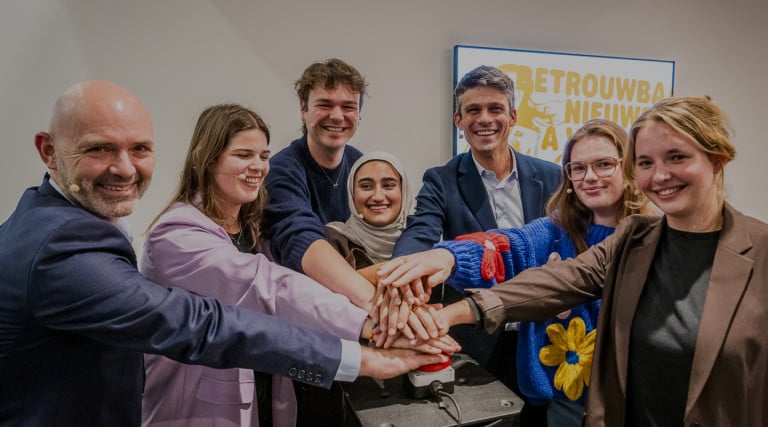

Pluralis invests in Croatian digital media company Telegram
In several European countries, independent news media are under increasing pressure. Central and Eastern Europe in particular have been marked in recent years by a wave of ownership takeovers and governments seeking to increase their grip on the media. Pluralis invests mission-driven capital and media expertise in independent news organisations that guarantee independent and high-quality coverage.
Since its establishment in 2021, Pluralis has invested in three companies in three countries. In late 2021, it acquired a 34% stake in Petit Press, Slovakia’s second-largest news publisher, which publishes the national independent newspaper SME. Pluralis took a 38.62% stake in Gremi Media, a leading Polish media company and publisher of Rzeczpospolita, one of Poland’s most influential newspapers.
Telegram Media Grupa
In July 2023, it acquired a 22.5% minority stake in Croatia’s Telegram Media Grupa, a purely digital publisher with brands including the news website Telegram and complementary media brands including Telesport, Super1, PitanjeZdravlja and Openspace, which together reach more than 1.3 million unique users a month.
Telegram Media Grupa was created in 2015 and has developed the Telegram news portal into one of the leading news websites on the market, with a focus on investigative journalism and quality content. In 2021, the company was one of the first digital media groups in Croatia to implement a subscription model.
The Pluralis investment will enable Telegram to develop its digital advertising and subscription models and diversify its revenues through content expansion and the development of new formats, brands and products.
In August 2023, Pluralis exercised an option to purchase an additional 13.43% stake in Gremi Media, bringing its total stake to 52.05%. Shortly after this transaction, Pluralis announced that it would sell its 13.43% stake to Central International Kft., a subsidiary of Central Group, which is a leading independent media publisher in Hungary. The partnership with Central Group will strengthen Gremi’s development potential. Pluralis remains the largest shareholder of Gremi Media with 38.62%.
Pluralis’ investments should ensure that at least one independent news medium can continue to exist in every country in Europe. So far, the fund has raised around €50 million in mixed capital (shares, bonds and funding from other foundations).
Journalism awards
The work of several Mediahuis journalists was honoured with an award in 2023. These awards recognise journalists who, through the quality of their work, contribute to social debate as well as to the strength and credibility of our profession.
Our journalists received major awards for their work in various disciplines such as interviews, reporting and investigative journalism. There were also awards for podcast productions and the insightful use of data, which is a recognition of our ongoing commitment to journalistic innovation.
Amnesty Media Award
Multimedia
15 endless days
Gabonese student Claude Junior recounts how he fled Kyiv: from police banning foreigners from boarding trains to the endless wait at the border where he sees people freezing to death.
Sibila Link - Christophe Olinger – Dominique Nauroy
European Digital Media Award
Best podcast
The Indo Daily
Newspaper readers are also becoming listeners: with its strong journalism, The Indo Daily is reaching a new audience. The podcast has more than 100,000 listeners a week.
Siobhán Maguire – Kevin Doyle – Fionnán Sheahan – Denis Calnan
De Tegel
Interview
Report on Groningen gas extraction and the parliamentary inquiry
A reconstruction of the Eric Wiebes era and how oil companies were able to extract gas unabated for two years after the Huizinge earthquake in 2012.
Bas van Sluis – Lyanne Levy - Arnoud Bodde
De Tegel
Interview
Blue Light: memories of an ambulance driver
A story about “retinal pollution”: the terribles images of broken bodies and desperate relatives that paramedics have to see. Who looks after these emergency workers?
Carola Houtekamer – Jaap van Heusden – Jefta Varwijk
INMA Global Media Awards
Best Internal Data Dashboard and Reports
Article DNA: The Secret Life of Article Characteristics
Article DNA analyses the effect of particular articles on reader behaviour. The scores can be used to influence conversion, engagement and retention of subscribers.
Genaud Molin - Bjorn Oostra
INMA Global Media Awards
Best Innovation in Newsroom Transformation
Project LEAP
Mediahuis Ireland’s regional titles and newsrooms are moving from a digital model that followed the weekly print cycle to a fully online local news service with daily breaking news.
Mediahuis Ireland
The Drum Awards for Online Media
Best Local/Regional News Site
The Belfast Telegraph
UK Regional Press Awards
News Website of the Year
The Belfast Telegraph
Amnesty Media Award
Multimedia
How a 15-year-old girl became a victim of rape
At a party in Hamburg’s city park, a 15-year-old girl is the victim of a gang rape. Ten young suspects stand trial.
Tammy Schmit, Christophe Olinger & Dominique Nauroy
De Loep
Controlerende onderzoeksjournalistiek
Report on Groningen gas extraction and the parliamentary inquiry
A reconstruction of the Eric Wiebes era and how oil companies were able to extract gas unabated for two years after the Huizinge earthquake in 2012.
Dagblad van het Noorden: Lyanne Levy – Bas van Sluis | NRC: Wubby Luyendijk – Claudia Kammer – Mark Middel – Derk Stokman
European Press Prize
Investigative Journalism
The Great Green Investment Investigation
An investigation into the practices of corporate investment funds that communicated their environmental achievements in misleading ways.
Yannick Lambert (Luxembourg Times) – Thomas Klein (Luxemburger Wort)
PrinsjesPodcastprijs
Daily Podcast
NRC Vandaag
How Eric Wiebes’ Groningen gas mission failed
Henk Ruigrok – Derk Stokmans – Floor Boon – Anna Korterink – Marco Raaphorst
Vereniging Wetenschapsjournalistiek Nederland
Publication Prize
Relief from anxiety with electrical surges in the brain
A background piece about a patient who overcame his anxiety disorder thanks to a brain implant.
Niki Korteweg
European Federation for Science Journalism
European Science Journalist of the Year
For the story of a patient who overcame his anxiety disorder thanks to a brain implant, an interview with Nobel laureate Katalin Karikó and an article on what medics do and do not understand about long Covid.
Niki Korteweg
UK Regional Press Awards
Designer of the Year
The Belfast Telegraph
Raymond Esteban
European Newspaper Awards
European Newspaper of the Year
NRC - Magazine
Newspaper Design National newspaper
Dutch Podcast Award
Daily Podcast
NRC Vandaag
The NRC Vandaag team
UK Regional Press Awards
Specialist Journalist of the Year
The Belfast Telegraph
Allison Morris
Irish Podcast Awards
Mediahuis Ireland
The Best Daily (The Indo Daily), Best Business (The Big Tech Show), Best Wellbeing (Real Health), Best News & Current Affairs (The BelTel), and Crime World with first in the Commercial Strategy category.
Justice Media Awards
Best Court Reporting
Irish Independent
Shane Phelan
Media Freedom Awards
Regional News Media Organisation of the Year
Sunday Life
International New York Festivals Radio Awards
Serialised Podcast
The Indo Daily
Irish Independent
Anne Vondelingprijs
Commendation
For her political journalism and her role as host of NRC podcast Haagse Zaken.
Lamyae Aharouay
Readers of De Standaard (don’t) save the future
How do readers of De Standaard view today’s big issues? With its Save the Future series, the newspaper appealed to “ordinary” citizens to offer up ideas and debate among themselves on subjects like education, health, housing, society, politics and the climate. Readers discussed these issues for five weeks. Journalists followed the conversations and each week delved into the most interesting solutions put forward.
No miracle solutions were found, the journalists concluded at the end of the series. But that was good news, they decided: after all, there’s no magic wand that can provide a quick fix for something as complex as a society.
It was noteworthy that the issues being considered and debated were often closely connected, the journalists found. For example: “The way we deal with older people or loneliness is linked to how we design our homes and villages. This in turn determines how safely and easily we can get around, and whether we have enough greenery around us to keep mind and body healthy. That health is in turn intertwined with how we organise our education, what food is on offer and how pleasant we make cycling and walking.”
Save the Future, alas, hasn’t saved the future. But readers’ insights did provide a few ideas for concrete policy, and some obvious solutions that politicians can get to work on, according to De Standaard.

Project LEAP enhances local news offer
With Project LEAP, Mediahuis Ireland is continuing its investment in reliable, regional journalism. LEAP – Local, Engaging, All-Ireland and Pioneering – is a local project with national focus, bringing together the talent of our regional reporters and the journalists from our national titles in a closer working relationship – all under one strong Irish Independent brand.
Mediahuis Ireland had already established a successful local news project in six existing counties. This led to a tenfold increase in page views over two years. Project LEAP is about building on this success by:
extending the Independent.ie local news offer to the 26 counties of the Republic of Ireland;
becoming even more relevant to local communities as a brand;
expanding the Premium+ package;
helping to increase the number of subscribers.
Existing local newsrooms were repurposed into digital-first regional "hubs" to manage the project. Specifically for Project LEAP, six new Digital Reporters and three additional Audience Editors were recruited. These new colleagues previously worked at other local media or for companies such as TikTok and Insider Inc in New York. They brought with them a wealth of experience that helped us make rapid progress in expanding this important, local news initiative. We have already generated millions of page views in the “new” counties and we now have a growing audience in all 26 counties. With our regional news stories, we now achieve an average of 4.6 million page views each week, with an average weekly attention time of 3.7 million minutes.
